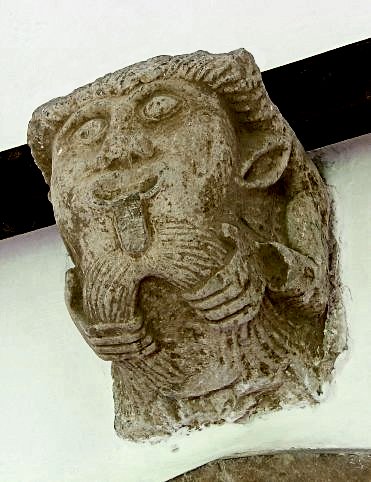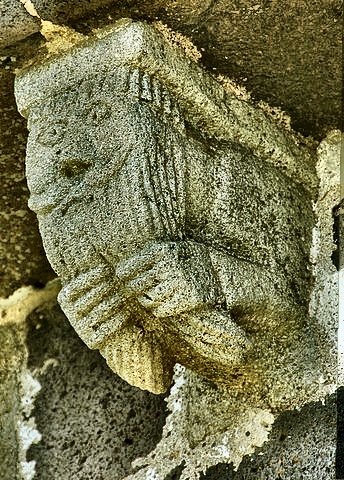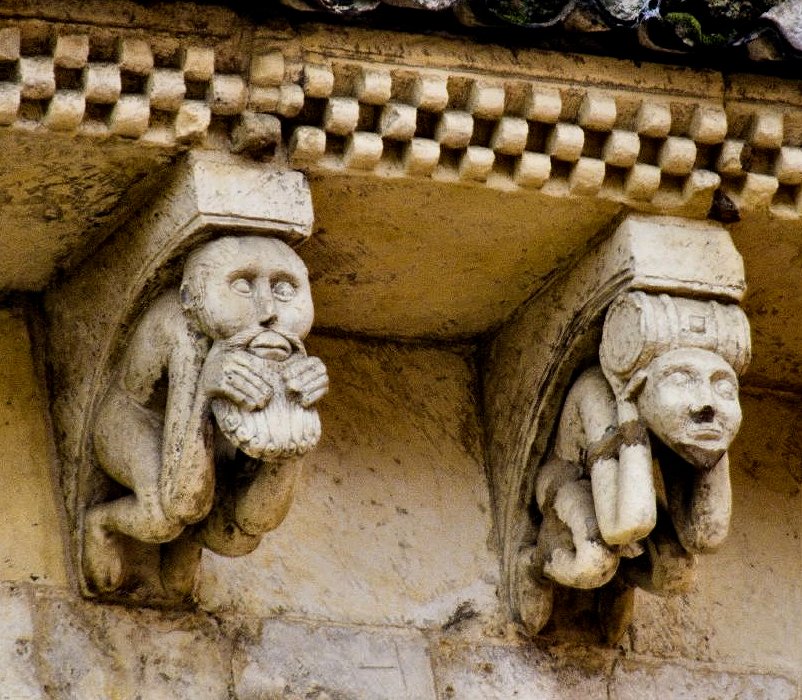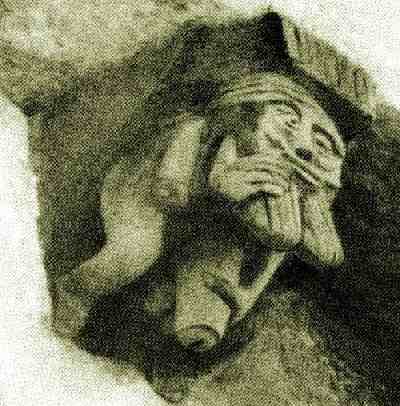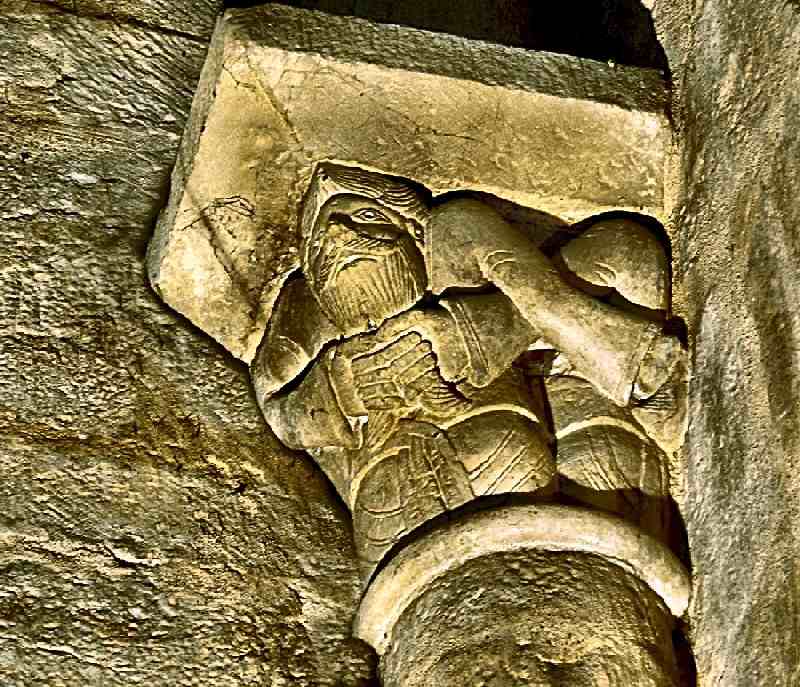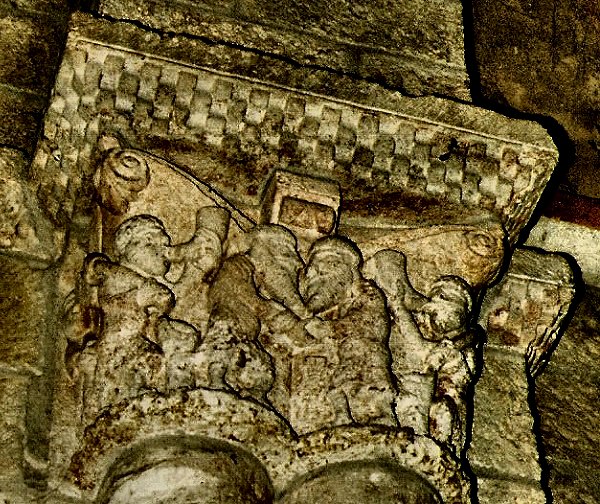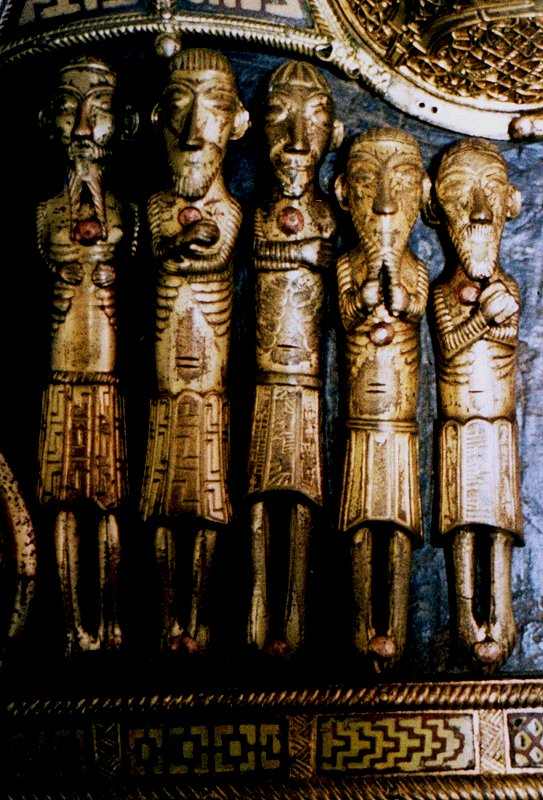see also Mouthpullers
Group I: figures pulling
their own beards, possibly and latterly
a metaphor of masturbation.

San Miñon de Santibáñez (Burgos), Spain.

Sévignac-Thèze (Pyrénées-Atlantiques)
Grain (Kent) - also a tongue-protruder
But since the Catholic
Church had, in large areas of Southern France, lost considerable ground
to the Manichæan Cathars
in the eleventh and twelfth centuries, and Cathar Perfects had forked beards
in the Syrian/Coptic/Irish monastic style, it is very likely that some beard-pullers,
at least,
represent and slur these anti-hypocritical 'heretics'.
|
|
|
Santa María del Mercado o del Camino, León
http://www.flickr.com/photos/adfinem/
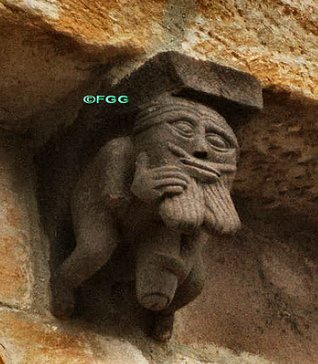
Elines (Cantabria)
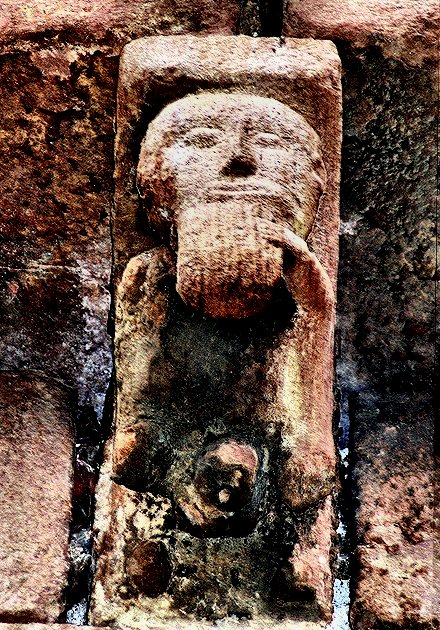
Mansilla de la Sierra (La Rioja)
http://www.flickr.com/photos/adfinem/
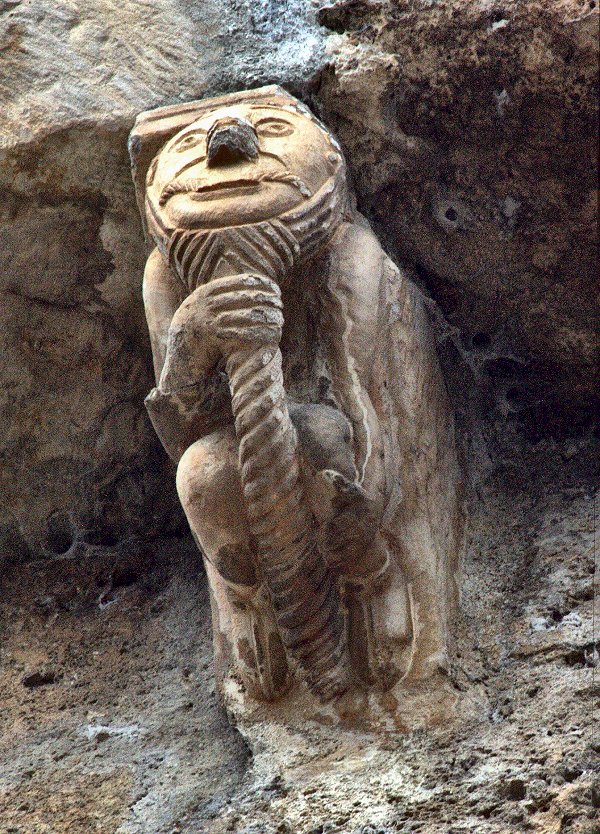
Corullón (León)
http://www.flickr.com/photos/adfinem/
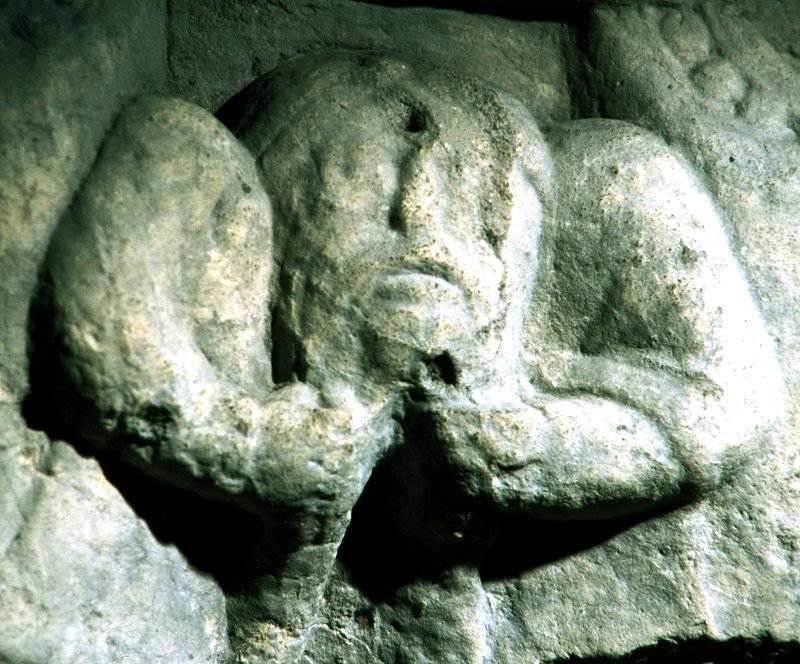
Bridlington (Yorkshire)
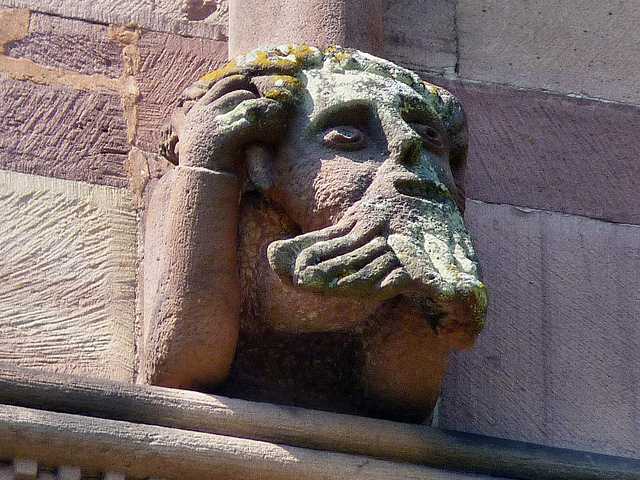
Murbach (Haut-Rhin) - also pulling his hair.
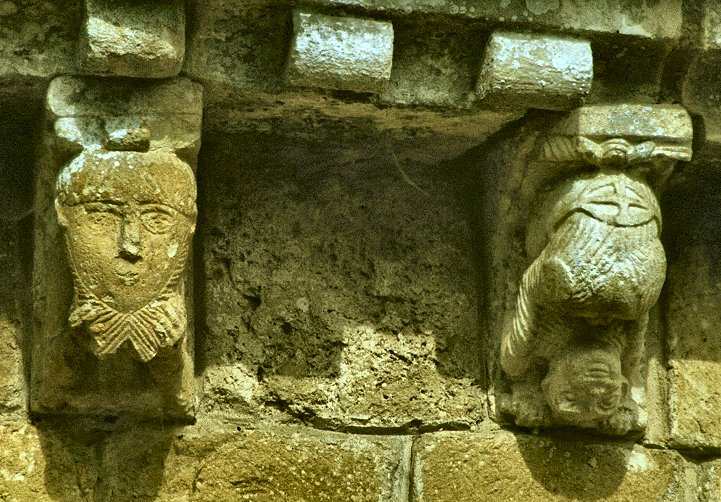
Cénac (Dordogne)
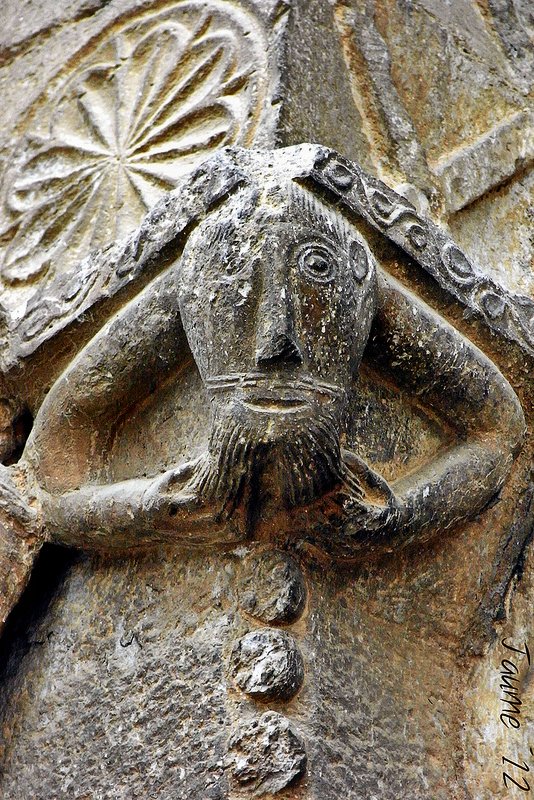
Sant-Pere de Galligans, Girona.
compare
with the small beard-puller at Saint-Antonin-Noble-Val
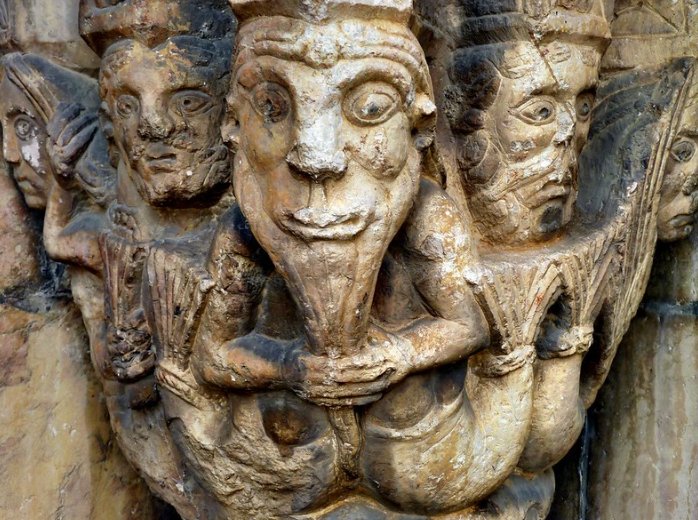
photo by Martin Miles
Toulouges (Pyrénées-Orientales) - a double-tailed merman pulling his beard.
Thiviers (Dordogne),
where there is also this striking capital of a sinner (with tongue protruded)
having his hair and his beard pulled.
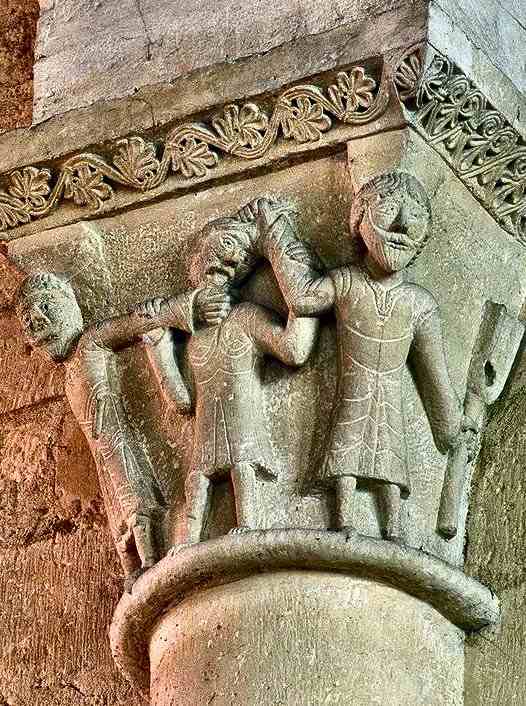
Gluges (Lot)
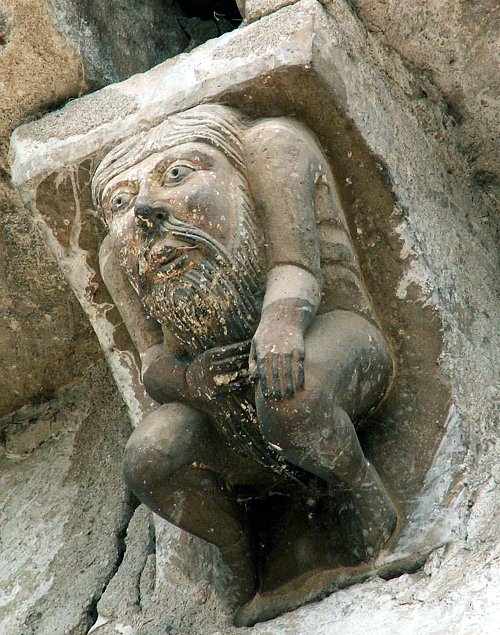
Sévignac-Thèze (Pyrenées-Atlantiques): the male is
holding his broken penis while also touching his beard.
The female appears to have been 'filled in', so to speak.
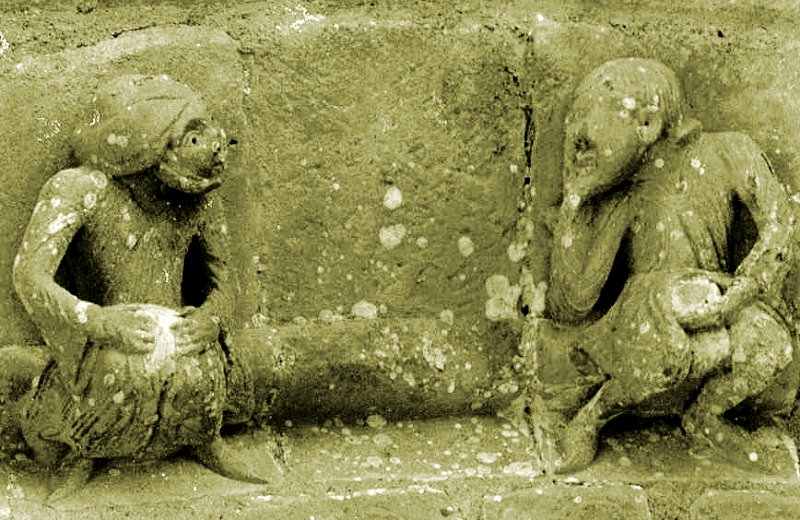
Bellefond (Gironde): this beardpuller is also an atlas-figure
and appears also to sport a large scrotum.

Guillaume Durand, Bishop of Mende, wrote in the second half of the 12th century:
«...we
shave our beards that we may seem purified by innocence and humility,
and that we may be like the angels, who remain always in the bloom of youth.»
If angels
were thought to be beardless and eternally prepubertal, so, by inversion,
bearded men (whether monks or publicans) might be thought of as devilish.
Yet Jesus was almost always (and still is) portrayed as long-faced and bearded.
Click here
to see a beard-pulling monk sketched on a 'Beatus' manuscript of the Book
of Revelations from Saint-Sever (Landes),
who is clearly holding an abacus in a kind of Atlas-pose.
The cute admonishing monkey might represent chastisement or questioning by
a Moorish holy man.
Saint-Sever is in the far south-west of France.
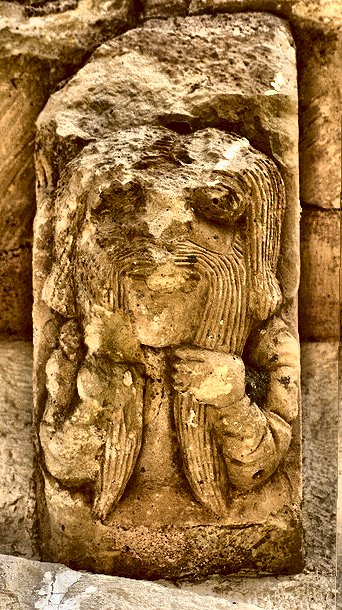
Moustache-puller, Tenzuela (Segovia)
http://www.flickr.com/photos/adfinem/
compare with Grain at the top of the page.
Group II: figures pulling
each other's beard, a depiction of strife -
though sexual overtones cannot be ruled out.
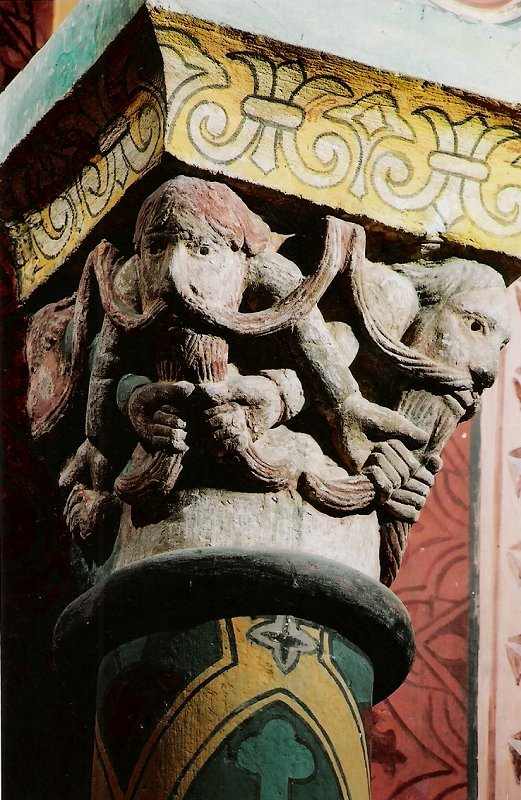
Brive (Corrèze)

La Sauve-Majeure (Gironde) - now in the Cloisters Museum, Manhattan.
The Musée d'Aquitaine in Bordeaux has on display
a male exhibitionist atlas-figure, and a female feet-to-ears acrobat from
the same pillaged abbey-church.
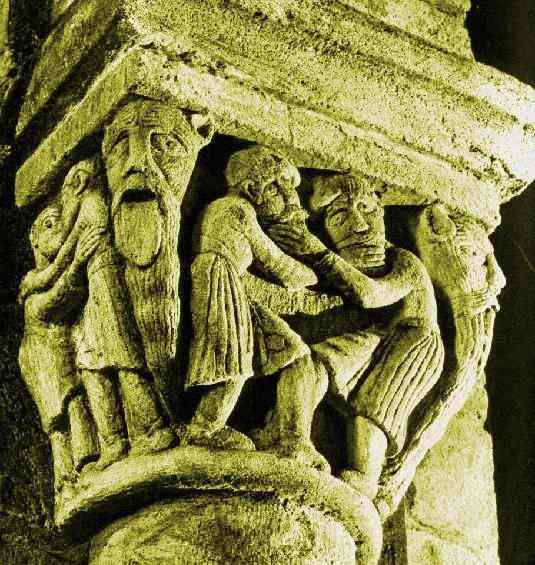
Anzy-le-Duc (Saône-et-Loire)
This scene should be considered in conjunction with the scene on the left-hand
side,
where two men (with more simian heads than these) are kissing.
The message could be that male on male love is as 'evil' as violence
and strife.
Or the beardpullers could symbolise mutual masturbation, so that the two sides
of the capital are harping on the same theme.
A solitary figure on the right might be a judgmental ecclesiastic.
The tongue-sticking beasts are a Romanesque 'indicator' of sin and
evil.

photo by Julianna Lees
Poitiers (Vienne) - now in the museum.
Saint-Antonin-Noble-Val
(Tarn-et-Garonne):
Maison des Consuls (which housed a court of justice): ferocious mutual beard-
(and hair-) pullers on a capital.
Compare with this lively manuscript sketch from De Laudibus Sancte
Crucis by Rabanus Maurus, Saint-Germain-des-Prés, 1030-1060.
Paris, Bibliothèque nationale, lat. 11685, fol. 25v.

Brioude (Haute-Loire):
capital with beard-puller ?monks and ?monks blowing oliphants
or trumpets of doom to announce the presence of evil.
Compare with a capital at Passirac (Charente) depicting a concupiscent
male
being warned by similar trumpeters of doom.

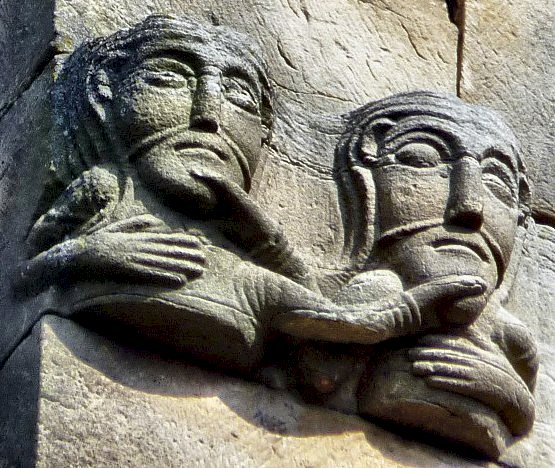
Rosheim (Haut-Rhin) - a very undramatic example.
Sant Joan de les Abadesses (Girona):
bicorporeal beardpullers, possibly combining the meanings of both the above
groups.

Oyré (Vienne): the Trumpeter of Doom simultaneously pulls the long beard of a sinner.

photo by Tina Negus
This capital at Aulnay-de-Saintonge is undoubtedly a scene
of punishment
rather than an illustration of the commission of a sin, as is the similar
scene (plus serpent) at Malestroit (Morbihan).
Note that the sinner's head is reversed, or his body inverted - possibly indicating
homosexuality as the sin.

Dinan (Côtes-d'Armor) : a man having his beard pulled by two monsters.

Classical-looking, beard-pulling centaurs at Charlieu (Rhône-Alpes)

Is this a remnant of an antique beard-puller ? (...though he might
be a flute-player.)

Photo of a figure in the Louvre, Paris, by Yves Réjasse
Centaurs are often portrayed wearing a Phrygian cap (as at Berrioplano,
Navarra).
This one of several beard-puller capitals at Stavanger (Norway) is being
tormented
by a fearsome toucan-like devil, who is pulling both his beard and his tail.
The figures below are on the Tomb-shrine of St Manchan in Ireland.
Click on the image to see more Irish beards and pullers.
The doorway of the church at Avy-en-Pons (Charente-Maritime)
is well-known for its burlesque satire on the Elders of the Apocalyse.
Instead of 24, there are here 36 - not wearing crowns, now bearing phials
of perfume, but enjoying themselves:
some play musical instruments including a live goose, and some hold, or pull,
their beards
- perhaps echoing the unheavenly cacophany in symbolic masturbation.
The element of satire - like those of punning and double-ententes -
is often 'just below the surface' of Romanesque sculpture.
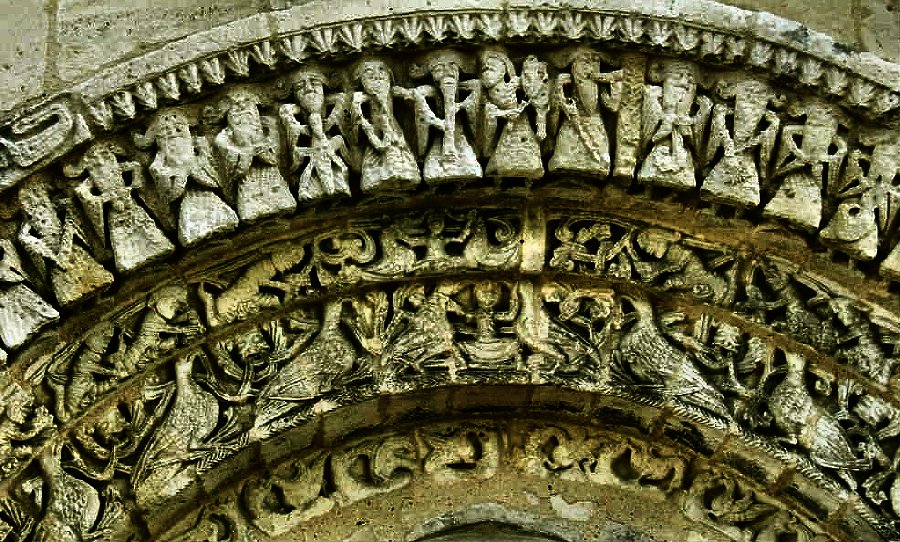
mouthpullers, tongue-protruders and tongue-pullers >
A bas-relief at Persepolis
(Iran) circa 490 BCE
which could easily be mistaken for a pair of beard-pullers
- especially from a sketch.
This might be an origin of the motif.

The late 15th century polychrome stone stature of Adam in Albi cathedral
shows him touching his beard significantly.

